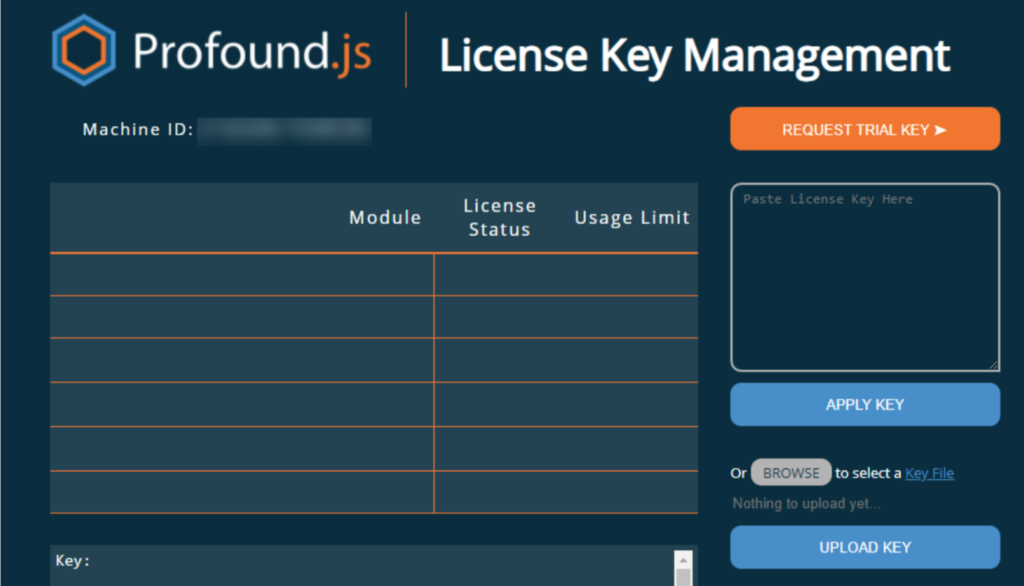Are you ready to transform your business applications with the power of AI? Profound Logic’s newest innovation, Profound AI, is here to make that transformation seamless and effortless. The Profound Installer can only be used with Windows systems. Have a Windows target system? Check out these step-by-step instructions on how to use our Profound Installer on your target system.
Here, we’ll walk you through the simple steps to install Profound AI, our gift to you, on your Mac or Linus systems.
Profound AI Installation Walk-Through:
Step 1: Prepare Your Environment
Before diving into the installation process, ensure your system meets the following requirements:
- A supported platform (IBM i, Windows, Mac or Linux)
- Node.js (version 18 or 20)
- NPM (Node Package Manager, usually bundled with Node.js)
For IBM i users, we recommend using the latest compatible version of Node.js available through IBM’s package manager.
Step 2: Install Profound AI
- Open your terminal.
- Create a new directory for Profound AI:
mkdir profoundaicd profoundai
- Install Profound AI using npm:
npm install profoundjs@<tag_name>
- Replace <tag_name> with the appropriate version tag (e.g., “latest-7 for the latest version of Profound.js 7 which includes Profound AI)
- Once the installation is complete, run the following command to finalize the setup:
node complete_install.js
- Follow the prompts to configure your Profound AI installation. You’ll be asked about port numbers, integration options, and other settings specific to your environment.
For more detailed instructions, see the documentation.
Whether you’re using the Profound Installer on Windows or the command line on Mac/Linux, the result is the same – a powerful Profound AI installation ready to revolutionize your business applications.
Step 3: Start Your Instance
Once the installation is complete, you’ll be returned to the Instances panel. Your new Profound AI instance should be listed here, indicating a successful installation. Need more information? Check out our documentation on Starting Your Instance.
Step 4: Getting a License Key
The final step is Applying License Keys for Profound AI. You can apply your Profound AI license key by visiting the following URL: http://system-name:port/key
Where system-name is the name of your own system and port is the port number that you used for your Profound AI instance. For example, if your system name is SYSTEM and your Profound AI instance is installed on port 8081, your URL would look like this: http://SYSTEM:8081/key.
If your Profound AI instance is running on your PC, use: http://localhost:8081/key

f you do not already have a license key for Profound.js, this screen gives you the option to request a trial key that will allow you to use a trial version of Profound.js before purchasing any licensing.
Once you have your license key, you can apply the key in one of two ways:
- You can copy and paste the key into the “Paste License Key Here” text area.
- You can upload the license key file from your local computer if you were sent a file that contains your new key.
Once you’ve pasted or uploaded the key, you will select the ‘Apply Key’ option. After applying the key, you can refresh the page to verify that the key was applied successfully. After the key is applied, you should see a list of modules that this key includes on this screen along with more details on the license status of the modules (i.e. whether you have a permanent or trial license for the modules listed, any usage limits, etc.).
How To Configure Your Models:
Now that you’ve successfully installed Profound AI, let’s talk about configuring your models. Profound AI offers incredible flexibility, allowing you to work with a variety of large language models to suit your specific needs.
- Locate Your Configuration File
- First, find your config.js file. This is where you’ll add or modify the “models” property to configure your preferred language models. This file will be in the directory where you installed Profound AI.
- Choose Your Models Profound AI supports a wide range of models, including:
- OpenAI models (like GPT-4 and GPT-3.5 Turbo)
- Google’s Gemini Pro
- Azure OpenAI models
- Anthropic’s Claude
- Mistral AI models
- Custom or open-source models
- Set Up Model Properties For each model, you’ll need to specify certain properties. Here’s a basic example:
- javascript Copy
models: {
"GPT-4": {
provider: "openai",
model: "gpt-4",
apiKey: "your-api-key-here",
stream: true
}
} - Key properties include:
- provider: Specifies the model provider (e.g., “openai”, “google”, “anthropic”)
- model: Identifies the specific model to use
- apiKey: Your authentication key for the API
- stream: Set to true if you want the model to stream its output
- Key properties include:
- Use Environment Variables for API Keys
- For enhanced security, we recommend using environment variables for your API keys. Create a .env file to store your keys, like this:
- Copy
OPENAI_API_KEY=sk-your-key-here
- Then, in your config.js, reference the environment variable:
- javascript
- Copy
- Then, in your config.js, reference the environment variable:
apiKey: process.env.OPENAI_API_KEY
- Customize Additional Parameters
- You can fine-tune your model’s behavior using the additionalParams property. This allows you to adjust settings like temperature, max tokens, and more:
- javascript
- Copy
additionalParams: {
temperature: 0.7,
max_tokens: 100,
top_p: 1.0
}
- Save and Restart
- After making changes to your config.js file, save it and restart your Profound AI instance for the changes to take effect.
By properly configuring your models, you can tailor Profound AI to perfectly suit your business needs, whether you’re focusing on customer service, data analysis, or any other AI-driven application.
Harness The Power of Profound AI:
Congratulations! You’ve successfully installed Profound AI and configured it to work with your preferred language models. This seamless installation and flexible configuration unlock the full potential of AI, empowering you to drive innovation and efficiency.
Explore the full potential of Profound AI at https://www.profoundlogic.com/ai/ and learn more about its features, including multi-model compatibility, dynamic agent guidance, and real-time data analytics capabilities, or check out Profound AI’s Top 25 FAQs here.
Have questions about Profound AI installation? Contact our team of experts: Futurization@ProfoundLogic.com or checkout our Profound AI Documentation.
